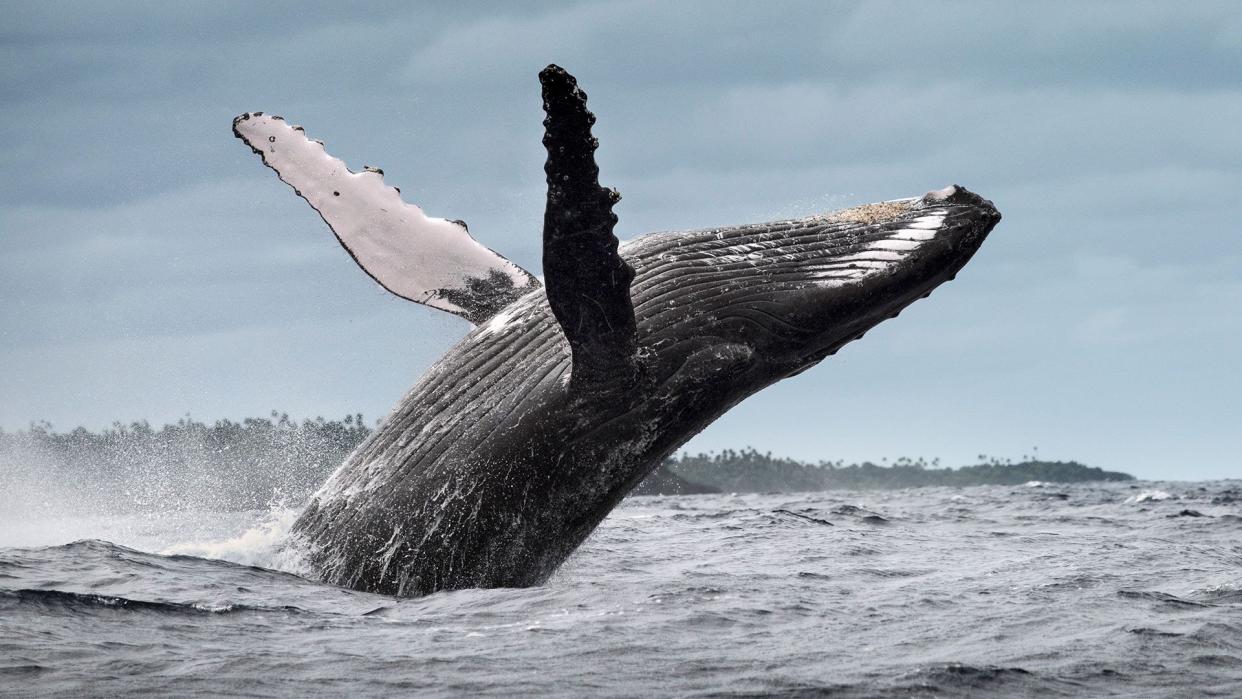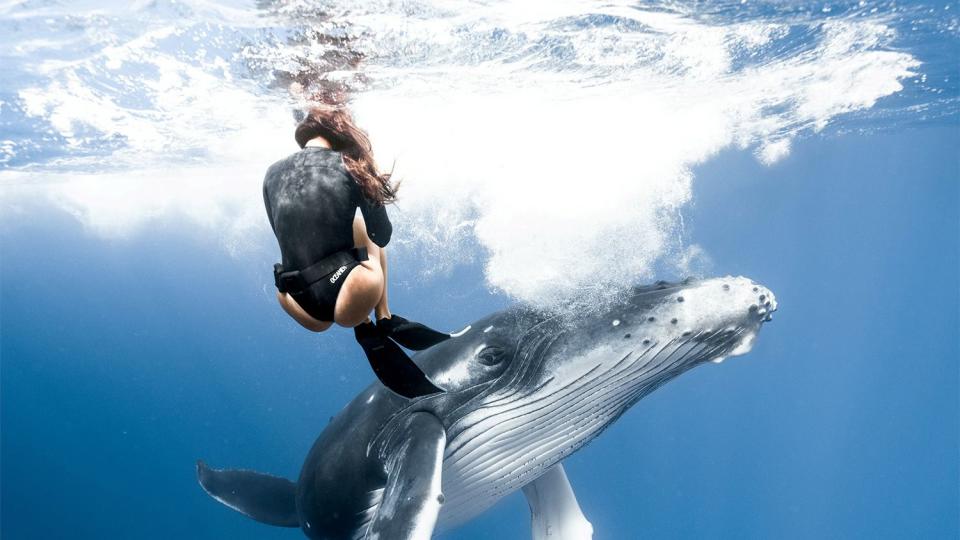Humpback Whales Share Songs Between Pods in the Pacific Ocean, According to New Research

Getty images A humpback whale
Sound is a vital form of communication for all species, and humpback whales are no different.
According to new research, the whales create their own songs, which are then shared from pod to pod as they migrate in various areas of the Pacific Ocean.
Researchers from the University of St Andrews, Universidad San Francisco de Quito and the CETACEA Ecuador Project's Acoustic Ecology Program found that groups of humpback whales in the Pacific Ocean sing songs that are passed along between pods as they travel to different places.
They made this discovery using a SoundTrap autonomous recorder over the years 2016 to 2018 at locations around the Pacific Ocean. This self-contained compact underwater sound recorder is ideal for short-term ocean deployments. The oceanographers also followed some of the pods during their migration, reported Science X.
Humpback whales are known for singing songs that can travel great distances and include sequences of moans, clicks, cries, and other sounds which are quite complex and often continue for hours, according to National Geographic.

SWNS
RELATED: Rescuers Free Humpback Whale Tangled in Fishing Gear While Her Calf Looks on — Watch Video
Typically, when hearing a song, an individual in the other pod may repeat it and create small modifications to it. But sometimes, for unknown reasons, an individual will make more significant changes, and the rest of the pod will follow that new song pattern.
Previous research has shown that over time, a song may start off with a simple tune and grow more complex, so a new group of whales will eventually start over and create a new song. As they migrate to other parts of the ocean, other groups of whales will hear the song and copy it, abandoning the old one as well, per Science X.
Though there is not yet a definitive reason for why humpback whales sing, it is most likely to communicate with others and to attract potential mates.

